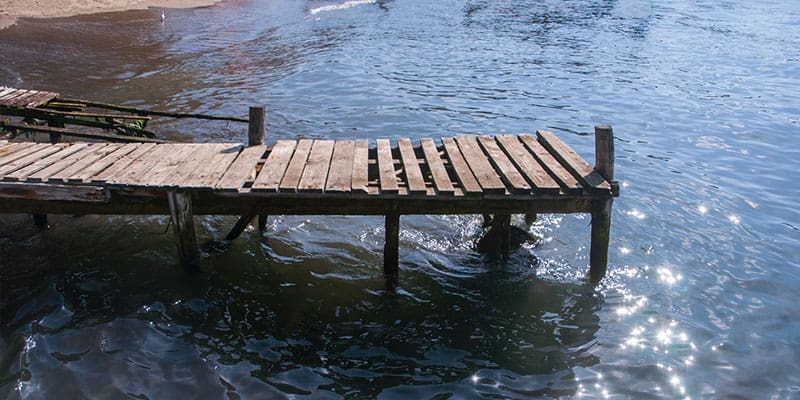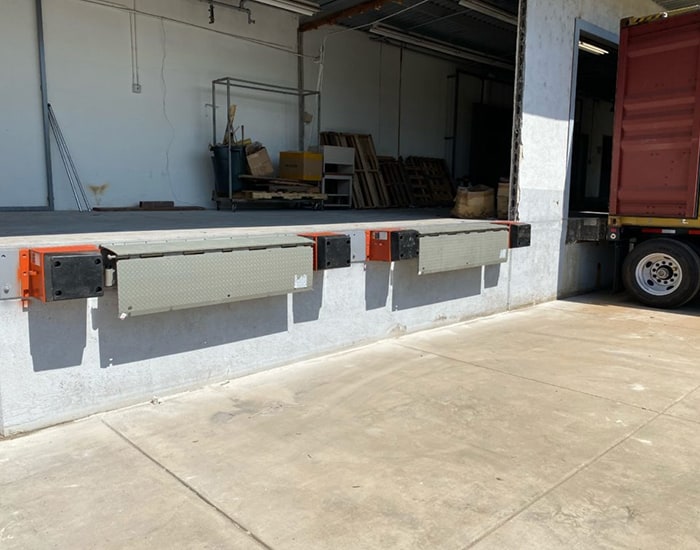Effective Dock Repair Techniques: Ensuring Structural Honesty
Ensuring the architectural stability of docks through reliable repair service methods is vital for the longevity and safety and security of aquatic facilities. This involves a multi-faceted method starting with extensive examinations using innovative innovations like sonar equipment and remotely ran cars (ROVs) to discover both noticeable and concealed damages. Ultimately, selecting the appropriate repair work materials, such as composite products and corrosion-resistant alloys, is important for toughness. Architectural reinforcement methods, consisting of the implementation of cross-bracing systems and load-distribution plates, play an important duty in mitigating anxiety factors. The relevance of these strategies comes to be apparent when discovering sophisticated repair methods and preventative upkeep approaches.
Examining Dock Damages
Assessing dock damages is an essential first action in guaranteeing the structural honesty and safety and security of any docking center. Secret aspects to check out include the dock's structure, pilings, outdoor decking, and equipment (Dock Repairs).
Structural designers or certified assessors usually perform these analyses making use of specialized tools and strategies. As an example, undersea assessments could utilize sonar tools or from another location ran lorries (ROVs) to identify submerged damage. Above water, aesthetic evaluations are matched by making use of dampness meters and various other analysis tools to reveal underlying problems not immediately visible to the nude eye.

Finding Repair Work Materials
Picking the ideal repair materials is a critical action in the dock remediation procedure, one that directly influences the long life and performance of the repaired framework. Material choice need to be driven by variables such as ecological problems, load-bearing demands, and compatibility with existing dock elements. For example, wood is a conventional selection for anchors because of its natural strength and aesthetic allure. Nonetheless, choosing the ideal kind of timber, such as pressure-treated lumber or normally rot-resistant varieties like cedar or teak wood, is important to hold up against water settings.
In addition to timber, composite products are progressively preferred as a result of their toughness and reduced maintenance needs. Composites, typically made from a mix of plastic and wood fibers, use superb resistance to rot, bugs, and UV damage. For steel docks, choosing corrosion-resistant alloys such as galvanized steel or marine-grade aluminum is important to protect against corrosion and make certain architectural honesty in saline water conditions.
Epoxy materials and marine-grade sealers are vital for fixing cracks and securing joints, supplying a water resistant barrier and improving the dock's overall toughness. By diligently choosing top quality materials, dock fixings can achieve durable outcomes, thereby securing against future destruction and ensuring secure, reputable use.
Architectural Reinforcement Strategies
Effective architectural support strategies are important in making certain the stability and durability of dock fixings. This approach is particularly reliable for docks subjected to hefty loads or extreme environmental conditions.
One more necessary strategy is the application of fiber-reinforced polymers (FRP) These materials use high strength-to-weight ratios and exceptional resistance to corrosion, making them suitable for enhancing concrete or wood anchors. FRP can be applied in sheets or strips and bound with epoxy materials to boost structural integrity.
Bracing and anchoring systems additionally play an essential role in architectural reinforcement. Cross-bracing, making use of metal or wooden light beams, can counteract side forces, decreasing persuading and motion. Anchoring systems, such as helical piers or driven heaps, offer a secure structure by transferring loads to much deeper, click here for info much more secure soil layers.
Finally, the integration of load-distribution plates can assist disperse weight much more evenly throughout the dock's surface area, minimizing localized stress and anxiety points. These methods collectively make certain that docks stay safe and robust, efficient in standing up to the rigors of their operational setting.
Advanced Repair Work Techniques

One more sophisticated strategy involves underwater welding, which enables repairs to be performed without the demand to dewater the area. This approach is specifically advantageous for attending to architectural issues in immersed dock components, making sure very little interruption to procedures. Improved welding methods, paired with robot systems, provide precision and dependability, thereby expanding the life expectancy of the dock.
In addition, cathodic protection systems are implemented to stop deterioration in metallic dock frameworks. By utilizing sacrificial anodes or impressed existing systems, these strategies properly mitigate the electrochemical procedures that result in material wear and tear.
Finally, advanced monitoring modern technologies, such as architectural wellness surveillance (SHM) systems, supply real-time data on the problem of dock structures. These systems make it possible for aggressive maintenance and timely treatments, eventually making certain the lasting structural integrity of the dock.
Maintenance and Avoidance
Upkeep and prevention are fundamental ideas that underpin the durability and safety of dock frameworks. Routine evaluations are extremely important, permitting for very early discovery of wear and tear, potential weaknesses, and environmental influences. A proactive strategy, including routine checks for corrosion, rot, and structural changes, reduces pricey repair work and prolongs the dock's operational life.
Safety nets need to consist of using safety coverings to metal elements to defend against corrosion and making use of treated timber to resist degeneration. In addition, guaranteeing proper drainage and air flow can stop water build-up, which is a common root cause of structural destruction. Incorporating high quality products and sticking to producer standards during building and construction and fixing phases also play vital roles in enhancing toughness.
Training employees in dock upkeep best practices makes certain consistent application of preventative steps. Leveraging technical breakthroughs, such as drones for examinations and sensors for real-time tracking, can better enhance maintenance initiatives. By focusing on upkeep and prevention, dock proprietors can make sure architectural integrity, functional safety, and cost-effective monitoring go to these guys over the dock's lifespan.
Conclusion
To conclude, keeping why not find out more the architectural stability of aquatic facilities necessitates comprehensive dock fixing techniques. Thorough inspections making use of advanced devices discover both noticeable and concealed problems, while the selection of suitable repair materials boosts sturdiness. Implementing structural reinforcement methods addresses stress factors efficiently. Advanced repair work methods, combined with normal upkeep methods, make certain the dock continues to be safe and operational under varied environmental conditions. Embracing these strategies dramatically extends the life-span and performance of marine facilities.
Guaranteeing the architectural stability of docks through effective repair service strategies is critical for the long life and safety of aquatic centers.Selecting the ideal repair products is a crucial action in the dock restoration process, one that straight influences the longevity and performance of the repaired framework.Effective architectural reinforcement strategies are vital in making certain the stability and durability of dock repair services. By prioritizing upkeep and prevention, dock proprietors can make certain architectural integrity, operational security, and economical administration over the dock's life-span.
In conclusion, maintaining the structural stability of marine facilities necessitates comprehensive dock fixing techniques.